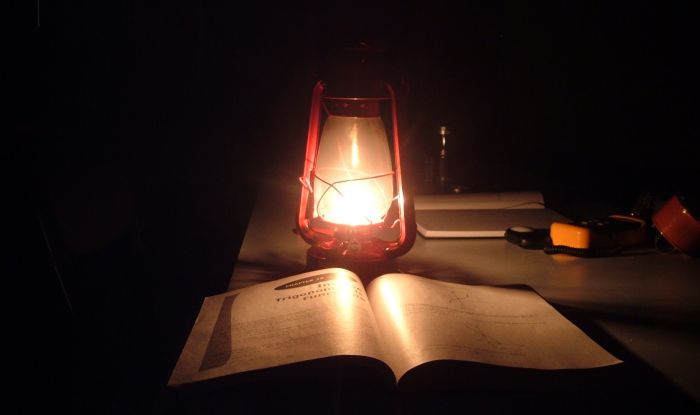
J&K Power Crisis: Causes and Solutions
Overall, J&K has a requirement of about 2,600 MW of electricity. However, the power supply to the Kashmir division is 1200 MW while to Jammu is 900 MW. There is a deficit of about 500 MW.
The Jammu & Kashmir administration last week said the Union Territory is facing a power crisis as its power projects are generating less electricity than before due to the dry spell in summer. The administration is taking steps to address the issue, it added.
How much electricity does J&K require? How much power are the UT’s projects generating? What is the administration doing to address the problem? We take a look.
What much power J&K is generating currently?
In comparison to an identified power generation potential of 16,475 MW, J&K currently generates only 3,263 MW of electricity in the state sector from 21 power projects. The largest share of energy, 2,009 MW comes from the central sector from seven projects while about 42.5 MW is brought in by the private sector through four projects. More than 85% of this comes from hydropower projects, the largest of which is the Baglihar project on the Chenab basin with an installed capacity of 900 MW.
What is the on-going power crisis?
Overall, J&K has a requirement of about 2,600 MW of electricity. However, the power supply to the Kashmir division is 1200 MW while to Jammu is 900 MW. There is a deficit of about 500 MW.
H Rajesh Prasad, principal secretary of the UT’s Power Development Department (PDD), said, “We are maintaining what we were supplying last year. However, availability is 1,400 MW from central and state generating agencies. We are supplying 2,100 MW.”
Even with an additional supply of 700 MW from the central power exchange, J&K is unable to meet its energy requirements. “
This 700 MW that we are buying is expensive,” Prasad added. J&K is buying this electricity between Rs 7 to Rs 10 per unit but it’s supplied for Rs 1.25 per unit to the below-poverty-line consumers and a maximum of Rs 4.50 to regular consumers, according to the principal secretary.
This costs the exchequer Rs 750 crore monthly and will increase to Rs 850 crore per month as demand increases in peak winter in Kashmir, the power department said.
What are the reasons for the deficit?
According to the PDD, J&K witnessed an unprecedented dry spell this summer, reducing power generation across its projects.
“Due to the dry spell, water flow in the rivers is very low and this is leading to a reduced generation capacity. From our power projects, mainly Baglihar, our total generation was about 1,050 MW but at the end of September this was around 700 MW and as of today, this is down to about 200 MW to 250 MW. This is a drastic fall and it has affected the power supply,” Prasad said.
This combined with what the secretary described as “expensive” electricity from the power grid, is causing a deficit.
J&K also suffers huge transmission losses. Aggregated technical and commercial (AT&C) losses in the UT were at 62% last year. It has been reduced to about 55% this year. While the department aims to bring it down to about 45% in the current financial year, the task has proven to be difficult.
A major reason for issue is that only 50% of J&K has metering systems, therefore billing can’t be done on per meter basis in many parts of UT. Another reason is the pilferage of electricity, using uninsulated wires.
What is the status of metering in J&K?
Out of 21 lakh households, about 50% are metered. Smart meters have also been installed in about 4 lakh households. However, the installation has faced resistance in many parts of J&K, in rural as well as urban areas. The UT administration has emphasised that round-the-clock electricity will only be possible with 100% metering in all areas.
At a press conference last week, Lieutenant Governor Manoj Sinha stated that while efforts are being made to install meters in all areas as early as possible, power cuts will be minimal in metered areas and maximum in non-metered areas.
According to a power curtailment schedule released this month by the PDD, while metered areas are seeing power cuts up to 4.5 hours a day, non-metered areas will see eight-hour power cuts. The number of hours is expected to increase in the coming months.
What steps is the UT administration taking to address the power situation?
Apart from aggressively pushing metering in the UT, the administration is promoting the use of AD cables to insulate wiring prevent theft. The PDD secretary said through the Revamped Distribution Sector Scheme (RDSS), the 5500 crore scheme, funded 90 per cent by the govt of India and 10 per cent through UT, has been sanctioned and will include metering, AD cables and modern transformers. “We are pursuing metering and installation of AD cables together, but we still need to cover a lot of distance,” Prasad said.
Additionally, on October 18 the union cabinet approved Green Energy Corridor (GEC) Phase-II – Inter-State Transmission System (ISTS) for 13 GW Renewable Energy Project in Ladakh. The transmission line for evacuating power will run through Himachal Pradesh and Punjab to Kaithal in Haryana, integrating with the National Grid and interconnection to Ladakh’s existing grid and the 220kV Alusteng Grid in Ganderbal district of Kashmir through Leh-Alusteng-Srinagar line, to provide power to J&K.
The UT administration has stated that the solar energy project will also reduce J&K’s dependence on hydropower, which is greatly reduced in the winter.
The 13 GW capacity will be a combination of 9 GW of solar power and 4 GW of wind energy. This capacity is proposed to be combined with 12 GWh of Battery Energy Storage Systems (BESS), which will result in the round-the-clock supply of power to the tune of 33,630 million Units per annum, as per the Government of India. Source

